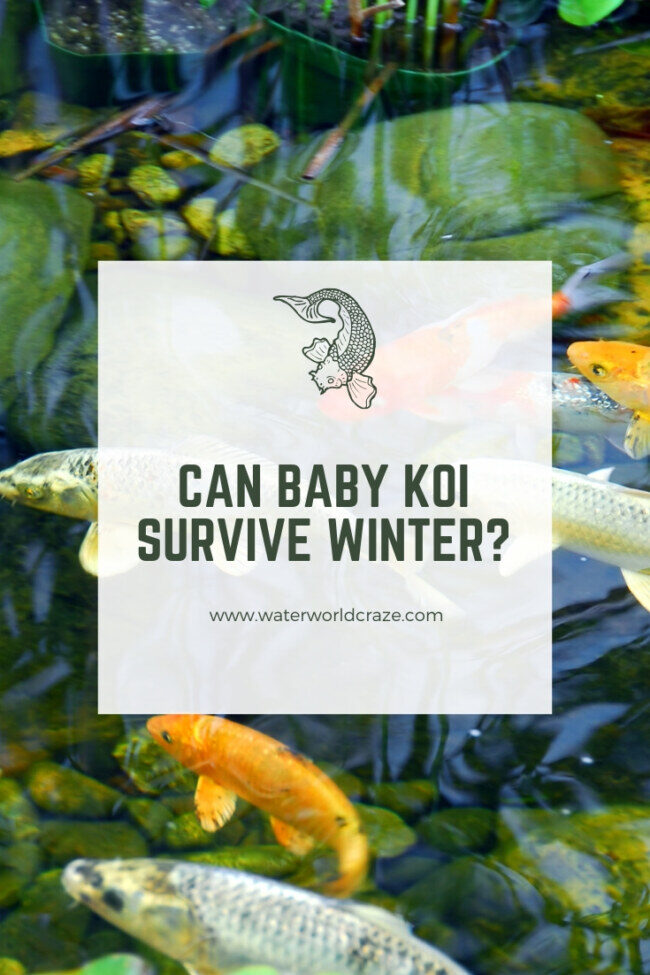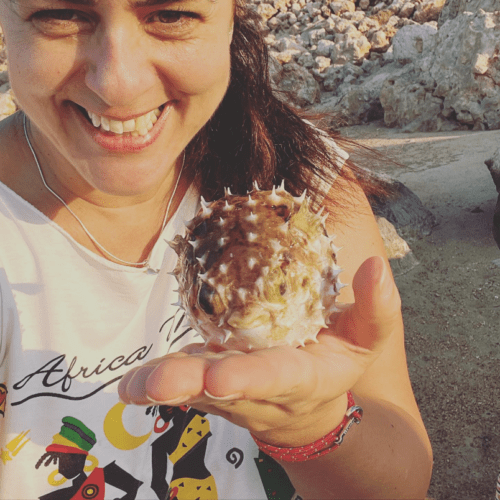 As I progressed with my journey of caring for koi fish, I got to know that baby koi, as well as adult koi, do require special care during winter when kept in outside ponds. I was always worried that especially the koi fry might die due to the low temperature.
As I progressed with my journey of caring for koi fish, I got to know that baby koi, as well as adult koi, do require special care during winter when kept in outside ponds. I was always worried that especially the koi fry might die due to the low temperature.
So, can baby koi survive the winter?
Yes, baby koi can survive winter as long as the water doesn’t freeze. Making baby koi survive in outdoor ponds can be challenging when the water temperature drops below 32 °F. However, by using proper water heating equipment, minimizing the feeding, etc. the survival of baby koi can be ensured.
Often new koi owners worry about how to care for their swimmer buddies during the winter months and ensure their safety and good health.
Especially when it’s the baby koi, worrying about their survival during winter is quite obvious since they are vulnerable and more prone to fall sick easily.
However, no matter how cold it gets outside, with proper care and safety measures, your Koi, both the grown-ups and the little ones can survive the harsh colder months in your outside ponds. Read on to know in detail.
Table of Contents
A detailed study of whether baby Koi can survive winter or not
Just like amphibians and reptiles, Koi fish are also Poikilothermic or cold-blooded water animals. It is on the temperature of the water upon which their metabolism, as well as the functioning of their immune system, depends.
Therefore, as the outside pond water starts getting colder with the arrival of winter, koi fish find it difficult to maintain their usual fast metabolism rate and effectively functioning immune system.
During the winter months, Koi fish, both small and big, therefore, go to a hibernation-like state, where they neither eat nor move around much. It’s their way of surviving the winter. However, if the temperature drops below 32 °F (0 °C), external help becomes necessary for their survival.
Can baby koi survive in cold water?
Winter simply lowers the survival chances of baby koi as well as adult koi. To make your baby koi survive winter, first of all, you need to prevent your pond from freezing or becoming solid.
Though koi are known to be very hardy fish; still, cold water with freezing temperatures can kill them. After all, during winter, their immune system becomes very weak and their metabolism turns slower.
Plus, cold water temperature also makes the pond water unlivable by decreasing the oxygen levels and increasing the levels of ammonia, nitrate and carbon dioxide in water.
Therefore, koi can withstand a certain level of temperature drop, but after that, they start to suffer and eventually may die.
What is the ideal temperature for Koi?
The water temperature of your pond not only plays a crucial role in maintaining the overall pond water quality but also in ensuring that your koi survive and thrive. The ideal water temperature for a healthy koi ranges between 65 °F and 75 °F.
Koi fish can even withstand a water temperature as low as 35 °F to 32 °F. But once the temperature starts dropping below it i.e. the water starts to turn solid, external means are required to let the baby koi, as well as the big ones, survive the winter in outside ponds.
What happens to baby Koi during winter?
Many believe that Koi fish go to hibernation in winter. But, in reality, they do not technically hibernate but become sedentary during the winter months and go into a state that’s quite similar to hibernation.
As the water temperature drops, the activities of both the baby koi and adult koi gradually decrease. However, they don’t completely stop the movement. They move around in the water at the bottom of the pond just to keep their joints from freezing up.
Since the water temperature stays warmer at the bottom of the pond during winter, koi fish prefer to stay at the bottom, most of the time. We explain more about how koi behave in “hibernation” here.
What are the best ways to help baby koi survive in winter?
If rapidly cool wind, freezing water and dropping temperatures are in the forecast, then know that it’s time to start caring for your baby koi to make them survive the winter in outside ponds.
Let’s take a quick look at the various ways of ensuring the safety and good health of the baby koi during winter here:
Opt for indoor tanks
Set up a tank indoor, either in the garage or inside your house (since regular water tanks or aquariums aren’t big enough for adult koi but may serve the purpose for baby koi). Or simply create a pond inside and move your koi including the baby koi there to help them survive winter.
You can also consider covering your koi pond with a greenhouse or solar cover to prevent the impact of outside temperature drop. The video below shows a nice setup for koi fry during the winter.
We also recommend reading our articles on keeping koi in tanks below:
Use the necessary water heating equipment
If you plan to keep your baby koi outside in the pond, make sure to keep the water heaters on always, during winter and maintain a water temperature that is ideal for both your adult koi as well as your baby koi.
However, to make sure no disturbance is caused to your hibernating koi fish, stopping the water pump and water filters can be helpful.
If the region where you live tends to experience water freezing temperatures, then make it a point to always run air-pumps and de-icer in your outside pond to prevent the water surface from turning into ice completely.
Remember, keeping an opening on the pond surface is essential even if the rest of the pond water surface becomes frozen completely. The opening not only helps the various noxious gases such as carbon dioxide get out of the pond water but also lets the oxygen in the pond water.
A completely ice-sealed pond surface means limited oxygen supply for the koi which they may find not enough to survive till Spring arrives and the ice melts.
Stop feeding
Don’t feed the koi fish if the water temperature goes below 55 °F to 48 °F as the fish will find it difficult to digest since cold water makes their metabolism slower.
When the temperature falls to 64 °F or below it, if needed, opt for wheatgerm based cold water fish food that contains easy to digest ingredients in them.
Don’t let the water get toxic
To help the baby koi survive winter in your outside pond, it’s important to ensure that the pond water doesn’t become toxic.
Hence, remove the leaves of the garden plants and trees that fall in your pond and cause the production of nitrate and ammonia along with the consumption of oxygen from the pond water.
You can also put a net on your koi fish pond to prevent the leaves from falling in water as it may make the water murky and dark.
Consider partial water change
You can also try partial water change during the winter months as it can simply boost the pond water quality and make it free from toxic wastes accumulated during summer and more preferable for your Koi fish.
Since winter makes koi, especially the baby koi, more vulnerable to infections and disease due to their lower immune system, treating the pond water for parasites, bacterial infections etc. two months earlier before the temperature reaches 50 °F is strongly recommended.

Marta, the driving force behind WaterWorldCraze.com, holds a Master’s degree in Marine Biology and has extensive experience in water sports and activities. With over 7+ years of hands-on experience in marine research and conservation, she has participated in numerous underwater expeditions and projects. Her passion for the aquatic world shines through in her expertly curated content. Join Marta as she explores the wonders of marine life and shares her adventures. Connect with her on Instagram @marinebiologymarta for more insights and updates.

